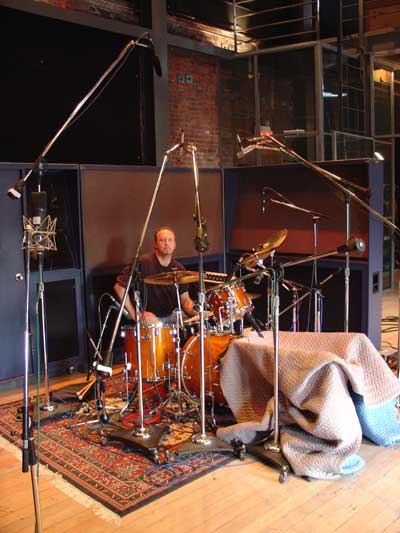Studio Drummer – Nuances Of Time
*THIS IS GOLD! BUY YOURSELF A CHEAP TAPE RECORDER AND JUST RUN IT DURING SETS WHEN PLAYING LIVE. EVENTUALLY SOMEONE IS GOING TO COME BACK TO YOU AND SAY THAT YOU WERE RUSHING OR DRAGGING. VERY OFTEN IT IS THEM! BUT NOW YOU HAVE A REFERENCE!*
I played with Roger Hodgson of Supertramp on a very large outdoor gig in front of 16,000 people. Due to some monitoring issues a few members of the band, as great of a band as it was were really pushing ahead on the beat. I could feel it and was really well acquainted with Supertramp’s music. (It goes back to that love of music thing again.)
*THE BASS PLAYER AND I HAD TO CONTROL THE TEMPO AT THIS POINT AND PULL THE BAND BACK JUST ENOUGH SO THAT IT WAS SITTING PROPERLY*
It ended up being a smoking gig!
Back to click tracks;
Once you stop wandering around on a click track and can comfortably play with it then introduce fills.
The drum fill and the human being combined with a click tend to be like oil and water. The universal human tendency when even approaching a fill, let alone playing it, is to speed up. This is one of the great disciplines of being a session drummer. If you are playing something that demands great energy and emotion you have to control an aspect of that emotion in order to execute a passage or many passages in perfect time, yet still retain the power and artistry.
It is not easy. It’s one of the most difficult skills that requires the most time and commitment to develop. But it’s the lynch pin.
*YOU’LL NEVER MAKE THE MAJOR LEAGUES IN BASEBALL IF YOU CAN’T HIT A CURVEBALL AS THEY SAY AND THE SAME RULE APPLIES HERE.*
So commit hard to this skill.
Work every feel, every groove at every tempo. Inside of all these grooves work every fill combination that is a part of your drum vocabulary. Work different length fills. Very spacious fills as well as very busy ones. Play an extremely slow blues shuffle to a click but …still make it swing hard. Ooh that’s a tough one!
Study very carefully your subdividing. Where do you have all 4 wheels in the ditch so to speak? But hear me on this! Where are you slightly pushing or pulling the click? In other words where are you ever so slightly ahead or behind the click?






